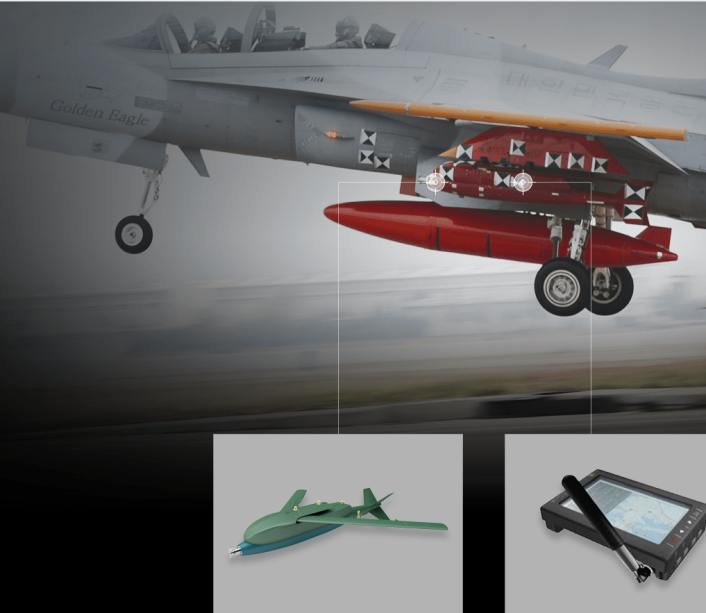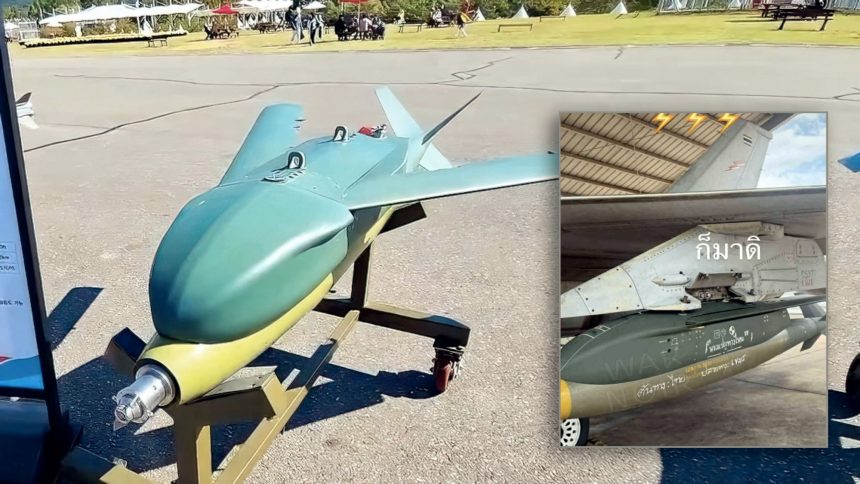As hostilities with Cambodia continue, photos show a RTAF F-16 carrying a Mk-82 bomb converted with the KGGB kit which Thailand acquired from South Korea in 2022.
Hostilities between Thailand and Cambodia continue for the third consecutive day, with reports about clashes in the southern Thai region of Trat. Thailand warned that the situation could erupt into a full-scale war, after a lingering border dispute escalated into fighting on Jul. 24, 2025. Reports by noon on Jul. 25, 2025, put the number of deaths at least at 14, mostly civilians.
Videos showed artillery duels, with Cambodian BM-21 Grad MLRS (Multiple Launch Rocket Systems) and Thai ATMOS 155 mm self-propelled artillery firing. According to AFP, a state of emergency declared by Thailand covers eight border provinces, and issued travel advisories.
Reuters quoted Thailand’s acting Prime Minister Phumtam Wechayachai, “The situation has intensified and could escalate into a state of war.” His Cambodian counterpart Hun Manet meanwhile criticized Bangkok’s decision to back away from an initially agreed ceasefire proposal tabled by ASEAN (Association of South East Asian Nations) chairperson Anwar Ibrahim.
🇹🇭✈️ Thai Air Force showcases a signed aerial bomb used by an F-16 (A/B) during recent airstrikes on the 🇹🇭/🇰🇭 Thailand-Cambodia border.
The bomb appears to be a domestic MK-82 fitted with South Korea’s 🇰🇷 LIG Nex1 KGGB precision-guided glide kit — boosting accuracy in contested… pic.twitter.com/RB31ph5ajZ
— EASTFRONT (@eastfront1) July 25, 2025
South Korean bomb guidance kit used by RTAF
The RTAF (Royal Thai Air Force) has reportedly used a South Korean-made bomb guidance kit when its F-16As struck Cambodian military targets. Images on social media on Jun. 25, 2025 showed the KGGB – abbreviation by its South Korean maker LIG Nex1 for the Medium-Range Air-to-Surface weapon – on the left wing of a RTAF F-16, converting a Mk-82 500 pound (220 kg) drop bomb into a precision surface-strike munition.
The 2nd Army Region has released images showing Royal Thai Air Force F-16 fighter jets conducting precision airstrikes on Cambodian military command posts.
The operation targeted the 8th and 9th Support Infantry Division Headquarters, which were identified as key units… pic.twitter.com/PSO535anuv
— Bangkok Post (@BangkokPostNews) July 24, 2025
The Thai bomb has several handwritten messages, similar to the “Hello Hunsen” note that was seen written on another Mk-82 bomb. The other weapon was converted with the Elbit Systems Lizard III guidance kit.
The KGGB presents similarities with the GBU-62 JDAM-ER, as they both employ a wing kit and GPS/INS guidance. In the KGGB’s case, however, it is reported that the guidance corrections are made by the specially designed wing kit.
The reported maximum range of the weapon is 103 km, depending on the release altitude.
🇰🇭⚡️🇹🇭 Cambodian forces launched a concentrated BM-21 rocket attack toward the Chong Bok area moments ago. pic.twitter.com/48GlFP7SFS
— #Insider (@insider_der) July 25, 2025
KGGB acquisition by Thailand and South Korea
The RTAF and the RoKAF (Republic of Korea Air Force) acquired the KGGB in 2022 and 2018, respectively, for their F-16s (designated by the RoKAF as KF-16) and KAI (Korea Aerospace Industries) FA-50/T-50TH Golden Eagles. The bomb can also be integrated on the RoKAF’s F-4E Phantom IIs, F-5 and F-15K Slam Eagle.
The integration can reportedly be conducted without any software or mission system modification, through using what LIG Nex1 describes as an external PDU (Pilot Display Unit). The RTAF’s future Saab Gripen E/Fs could become another launch aircraft.
A Thai M758 multiple rocket launcher was positioned directly on a public road before firing toward Cambodian territory, reports say.#Thailand #Cambodia #BorderClash #BreakingNews #สกายนานิ pic.twitter.com/meTnukH8cx
— EASTFRONT (@eastfront1) July 25, 2025
In an archived November 2023 report about the RTAF integrating the KGGB on their F-16, Imaeil said that the service acquired in 2022 a total of 20 KGGBs from LIG Nex1 in two installments. The RTAF also released “flight training records” of the bomb kit, in what could be a testing campaign.
Janes in Aug. 2022 also mentioned the RTAF’s KAI T-50TH Golden Eagle as the original KGGB-operator aircraft, an aircraft of which the RoKAF is the largest user. While the RTAF operates 14 T-50THs as Lead-In Flight Trainers (LIFT) – with the ‘T’ designation denoting the trainer variant of the FA-50 – the use from the F-16 bears its compatibility from Western aircraft.
The RoKAF itself uses 1,200 KGGBs acquired in 2018. The DAPA (Defense Acquisition Program Administration) expanded in Jan. 2020 that inventory, according to Yonhap, with an unidentified number of additional KGGBs for 470 billion won ($3.39 billion as per today’s rates).

KGGB glide bomb kit
LIG Nex1’s product brochure calls it a “GPS-aided kits improve range and accuracy to ensure fighter survivability.” An older archived page from on LIG Nex1’s website also shows the PDU. This is somewhat like the MAGTAB (Marine Air Ground Tablet) used for the LRPF (Long-Range Precision Fire) test of what was later revealed as L3Harris’s Red Wolf and Green Wolf series of air-launched effects.
The archived page said that the PDU allows the KGGB to be operated by “five types of fighters without modification.” The page also showed an image of the KGGB being tested from a KAI FA-50 Golden Eagle. An inset image of the PDU shows what appears to be a common map interface, helping to mark the target location to send the KGGB on.
A Jan. 2021 video rendition of the KGGB’s operational concept shows an F-15K releasing two KGGBs, before returning to base. The KGGB-kitted bombs enter a GPS/INS (Global Positioning System/Inertial Navigation System) guidance phase after gliding for a distance, before striking the land targets.
Imaeil added that the KGGB gives the unguided MK-82 bomb a maximum range of 110 km, with a 3 meter CEP (Circular Error Probability). “It is possible to change targets or perform a turning attack mid-flight, allowing for long-range precision strikes on enemy targets hidden on mountain slopes,” the report added, referring to the type of North Korean land targets the RoKAF itself would have to engage.
“It can precisely strike targets such as North Korean long-range artillery hidden in hills, mountains, tunnels, and mine shafts from a long distance or from behind,” Yonhap added. Imaeil also billed the weapon as cheaper than the American equivalent like the JDAM-ER (Joint Direct Attack Munition-Extended Range).
There have also been reports about LIG Nex1 developing a new variant, the KGGB 2. This is reportedly expected to sport a dual-mode mid-infrared and Semi-Active Laser (SAL) seekers and a Weapons Data Link (WDL), enabling it to be retasked and receive targeting updates mid-flight.
H/T @seominsoo730306 for the heads-up!









